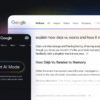
In March 2019, the “IoT Cybersecurity Improvement Act of 2019” was introduced in the United States. The law's stated goal is "harnessing federal government procurement power to encourage increased cybersecurity for Internet of Things devices and other purposes."
OWASP Internet of Things (IoT) provides a consolidated list of risks, threats and vulnerabilities applicable to developers, enterprises and consumers and has identified “weak, guessed or encrypted passwords” as the main problem affecting IoT systems.
The first half of 2019 confirmed the range of vulnerabilities in cloud systems and the need to improve reliability in terms of IoT adoption.
Hackers will use facial recognition software and organizations will respond with behavior-based systems
In 2019 there was a sort of outcry towards facial recognition technologies citing privacy reasons: the city of San Francisco banned the use of facial recognition by government departments, while the use of technology by British law enforcement has been questioned. Nonetheless, with the (unwanted) attention exercised on voice recognition systems and national biometric intelligence databases, it will be necessary to continue to monitor this area, to understand how to defend against these abuses.
#digife #website #web #website #ecommerce #ecommerce #webdesign #seo #digitalmarketing #graphicdesign #business #websitedesign #webdevelopment #webdesigner #branding #webdeveloper #socialmediamarketing #entrepreneur #startup #digital #malware #virus #itsecuritu #hacker #sicurezzainformatica
Source http://bit.ly/2LDWprM








